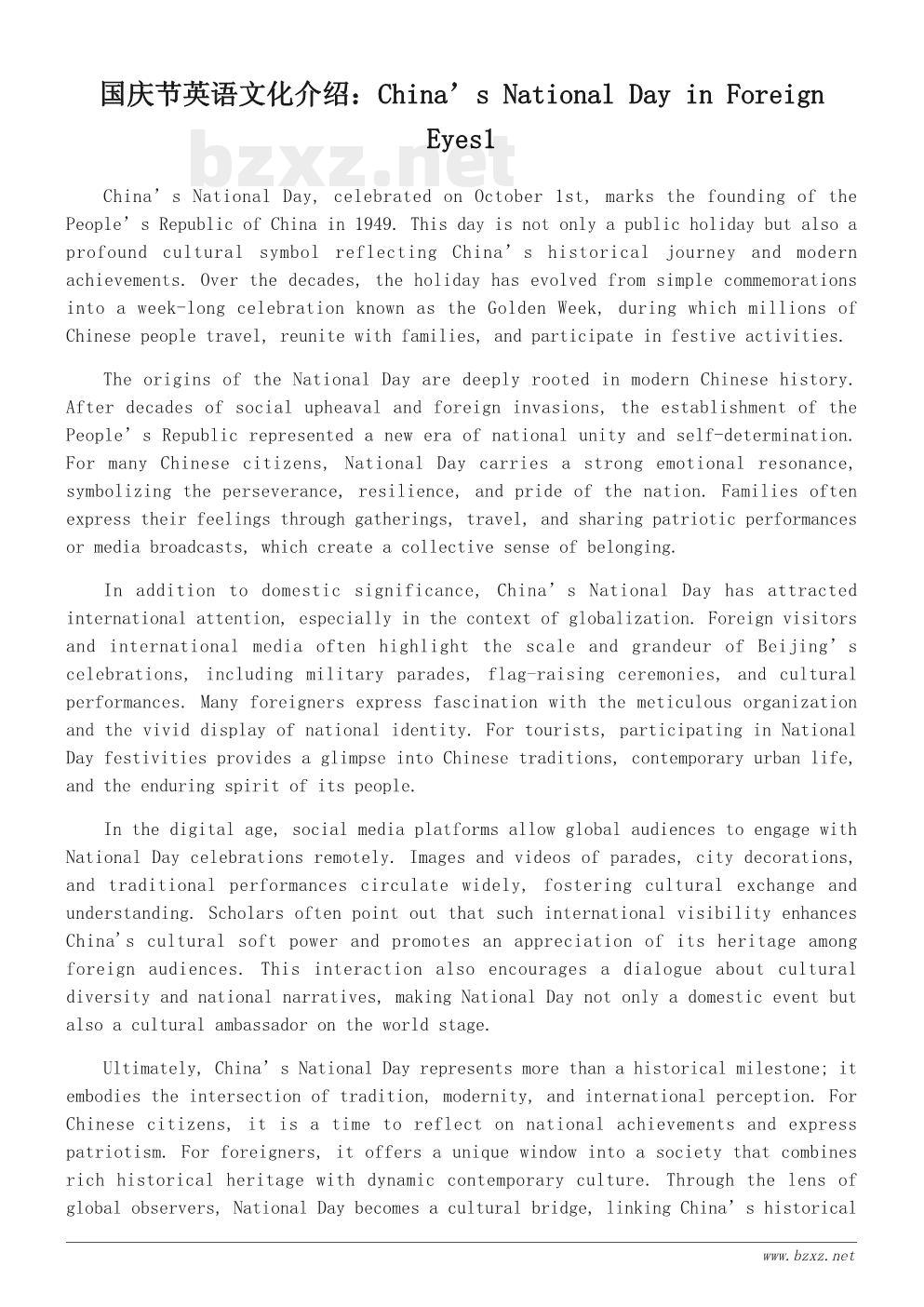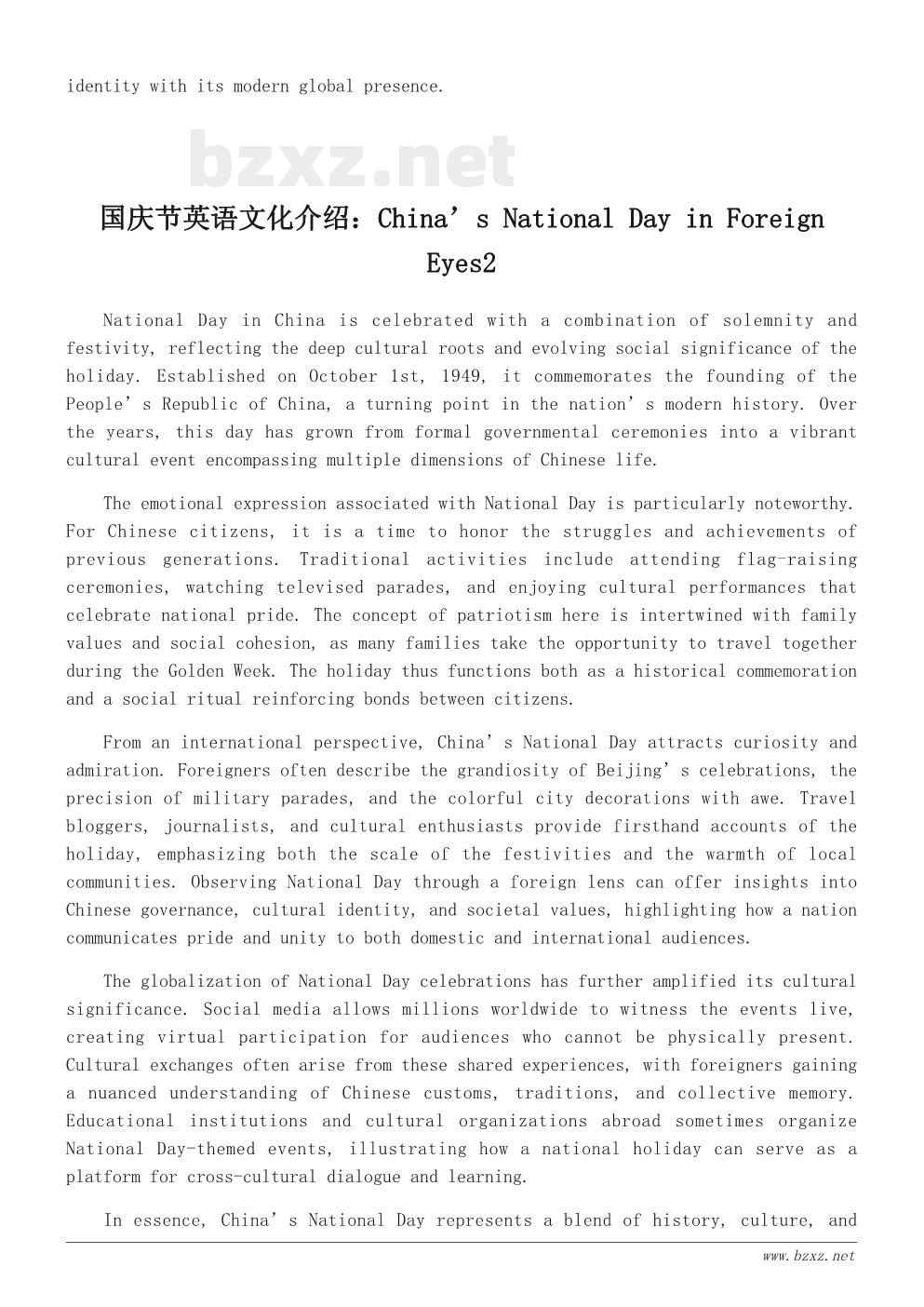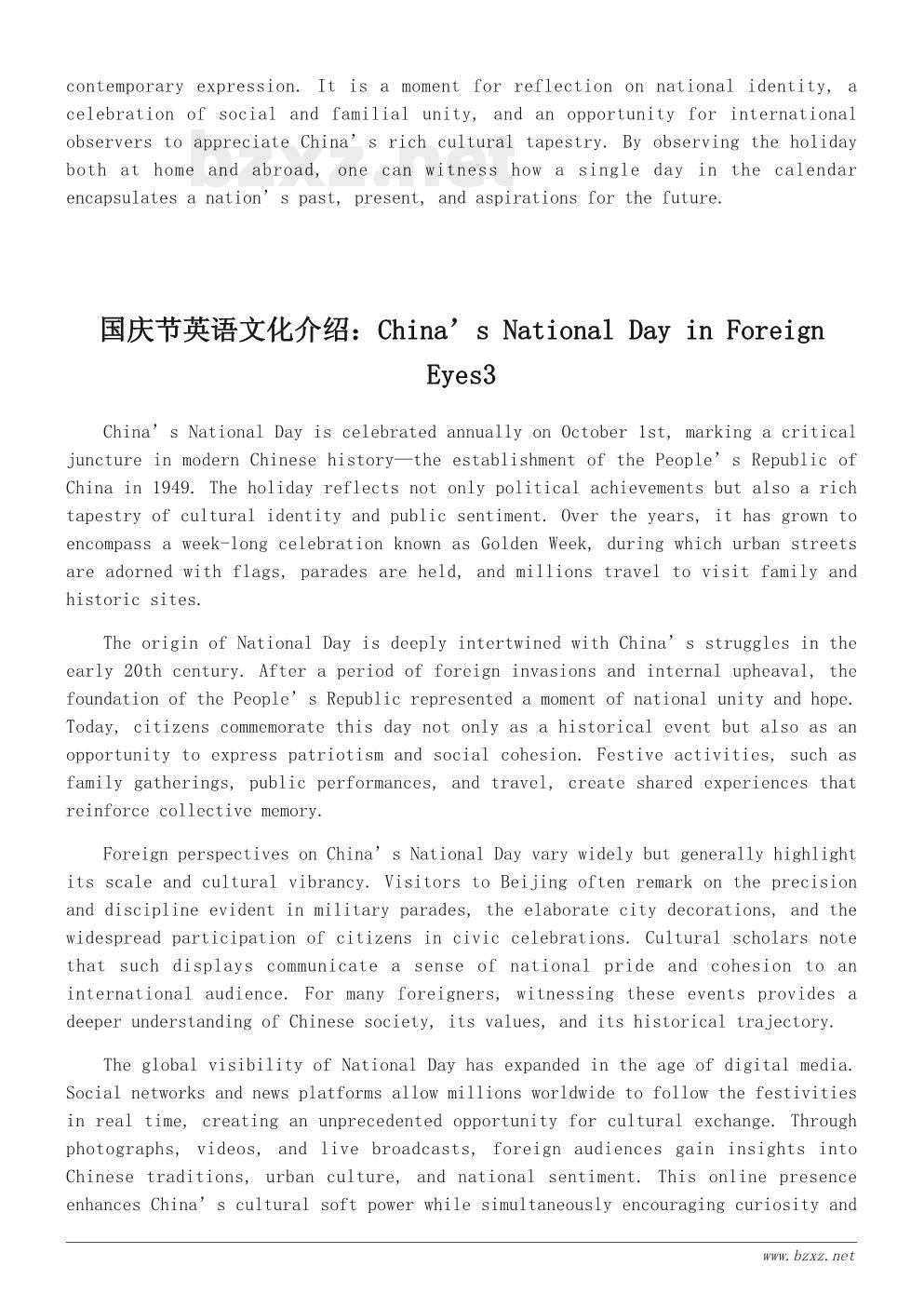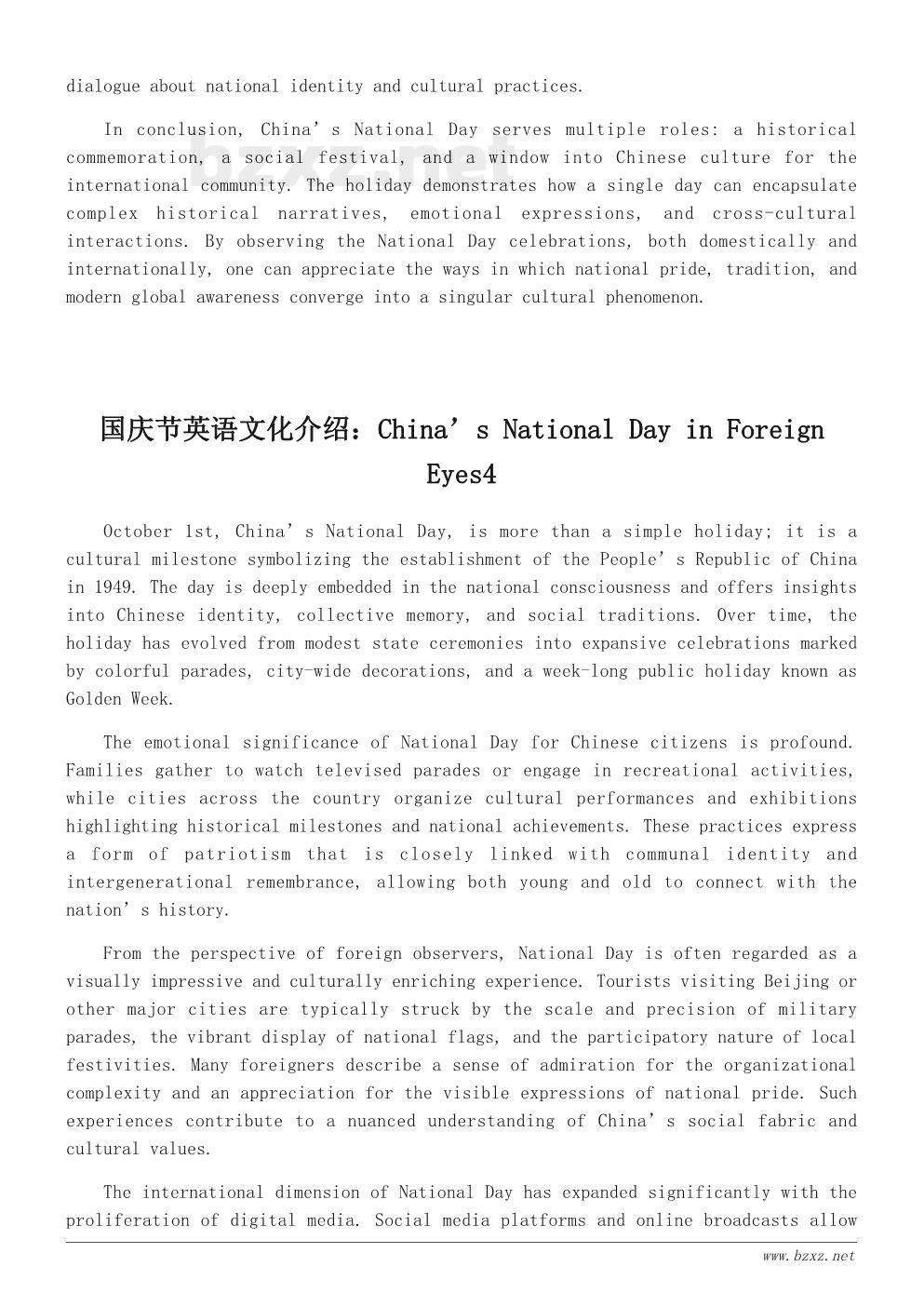国庆节英语文化介绍:China’s National Day in Foreign Eyes1
China’s National Day, celebrated on October 1st, marks the founding of the People’s Republic of China in 1949. This day is not only a public holiday but also a profound cultural symbol reflecting China’s historical journey and modern achievements. Over the decades, the holiday has evolved from simple commemorations into a week-long celebration known as the Golden Week, during which millions of Chinese people travel, reunite with families, and participate in festive activities.
The origins of the National Day are deeply rooted in modern Chinese history. After decades of social upheaval and foreign invasions, the establishment of the People’s Republic represented a new era of national unity and self-determination. For many Chinese citizens, National Day carries a strong emotional resonance, symbolizing the perseverance, resilience, and pride of the nation. Families often express their feelings through gatherings, travel, and sharing patriotic performances or media broadcasts, which create a collective sense of belonging.
In addition to domestic significance, China’s National Day has attracted international attention, especially in the context of globalization. Foreign visitors and international media often highlight the scale and grandeur of Beijing’s celebrations, including military parades, flag-raising ceremonies, and cultural performances. Many foreigners express fascination with the meticulous organization and the vivid display of national identity. For tourists, participating in National Day festivities provides a glimpse into Chinese traditions, contemporary urban life, and the enduring spirit of its people.
In the digital age, social media platforms allow global audiences to engage with National Day celebrations remotely. Images and videos of parades, city decorations, and traditional performances circulate widely, fostering cultural exchange and understanding. Scholars often point out that such international visibility enhances China's cultural soft power and promotes an appreciation of its heritage among foreign audiences. This interaction also encourages a dialogue about cultural diversity and national narratives, making National Day not only a domestic event but also a cultural ambassador on the world stage.
Ultimately, China’s National Day represents more than a historical milestone; it embodies the intersection of tradition, modernity, and international perception. For Chinese citizens, it is a time to reflect on national achievements and express patriotism. For foreigners, it offers a unique window into a society that combines rich historical heritage with dynamic contemporary culture. Through the lens of global observers, National Day becomes a cultural bridge, linking China’s historical identity with its modern global presence.
国庆节英语文化介绍:China’s National Day in Foreign Eyes2
National Day in China is celebrated with a combination of solemnity and festivity, reflecting the deep cultural roots and evolving social significance of the holiday. Established on October 1st, 1949, it commemorates the founding of the People’s Republic of China, a turning point in the nation’s modern history. Over the years, this day has grown from formal governmental ceremonies into a vibrant cultural event encompassing multiple dimensions of Chinese life.
The emotional expression associated with National Day is particularly noteworthy. For Chinese citizens, it is a time to honor the struggles and achievements of previous generations. Traditional activities include attending flag-raising ceremonies, watching televised parades, and enjoying cultural performances that celebrate national pride. The concept of patriotism here is intertwined with family values and social cohesion, as many families take the opportunity to travel together during the Golden Week. The holiday thus functions both as a historical commemoration and a social ritual reinforcing bonds between citizens.
From an international perspective, China’s National Day attracts curiosity and admiration. Foreigners often describe the grandiosity of Beijing’s celebrations, the precision of military parades, and the colorful city decorations with awe. Travel bloggers, journalists, and cultural enthusiasts provide firsthand accounts of the holiday, emphasizing both the scale of the festivities and the warmth of local communities. Observing National Day through a foreign lens can offer insights into Chinese governance, cultural identity, and societal values, highlighting how a nation communicates pride and unity to both domestic and international audiences.
The globalization of National Day celebrations has further amplified its cultural significance. Social media allows millions worldwide to witness the events live, creating virtual participation for audiences who cannot be physically present. Cultural exchanges often arise from these shared experiences, with foreigners gaining a nuanced understanding of Chinese customs, traditions, and collective memory. Educational institutions and cultural organizations abroad sometimes organize National Day-themed events, illustrating how a national holiday can serve as a platform for cross-cultural dialogue and learning.
In essence, China’s National Day represents a blend of history, culture, and contemporary expression. It is a moment for reflection on national identity, a celebration of social and familial unity, and an opportunity for international observers to appreciate China’s rich cultural tapestry. By observing the holiday both at home and abroad, one can witness how a single day in the calendar encapsulates a nation’s past, present, and aspirations for the future.
小提示:上面此文档内容仅展示完整文档里的部分内容,若需要下载完整文档请点击免费下载完整文档。




